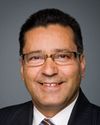I'm not as pessimistic as some people who do the analysis and the economics are because I do see a lot of investment in new products, and there's the fact that our exports are back at pre-recessionary levels. It has taken a long time to get there, but it's not as if we've dropped off the board.
Are there challenges? Yes, there are, but another thing we really need to do—and John Curtis did a superb job of trying to put together an economic framework for analysis behind this, behind the global markets action plan—is to have a much better way of measuring international business activity, because if you can't measure something, you can't improve it.
For example, a few years ago I went to Chengdu, Sichuan, where I had an opportunity to meet the head of the industry association there, who told me that the biggest-selling foreign car in Chengdu was a Canadian car, Chrysler, out of Brampton. That surprised me because I came back—I had a very nice dinner because of that—and looked at our statistics. How many Canadian cars do you think we export to China, according to Statistics Canada? None, and the reason is that they're distributed through the United States.
If we can't measure our trade, imports or exports, I can guarantee we don't have a very clear idea of services trade. What I see on the part of a number of companies that perhaps might have adopted an export strategy a few years ago is that now they're adopting a much more direct investment strategy. Last year, the sales of Canadian affiliates in foreign markets actually exceeded our exports.
So we are seeing those investments. We are seeing an awful lot of international business, but we're not necessarily seeing that here, from a Canadian base. I think that's important to recognize in terms of the support and the trade policy we are pursuing here on the part of government, as well as the business strategy about how to enter new markets.




